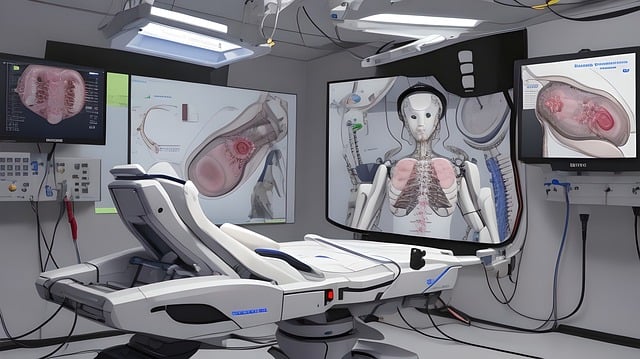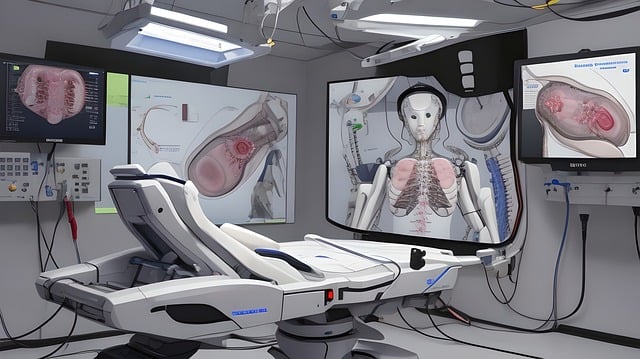The Rise of Automatic Trading: Revolutionizing Financial Markets
In the ever-evolving landscape of financial markets, automatic trading has emerged as a transformative force. As technology advances and algorithms become more sophisticated, traders and investors are increasingly turning to automated trading systems. This article delves into the intricacies of automatic trading, examining its benefits, challenges, and future prospects in the global market.

Understanding Automatic Trading Systems
Automatic trading, often referred to as algorithmic trading or automated trading, involves the use of computer algorithms to execute trades on behalf of an investor or trader. These systems rely on predefined criteria and market conditions to make decisions in real-time, eliminating the need for human intervention.
How Automatic Trading Works
At its core, automatic trading operates on a set of rules that dictate when to buy or sell assets. These rules can be based on various factors, including:
- Technical Indicators: Traders often use mathematical calculations based on historical price patterns to predict future movements.
- Market Conditions: Algorithms can analyze real-time data to gauge market sentiment and volatility.
- News and Events: Some systems even incorporate news feeds and social media sentiment analysis to react to external factors influencing the market.
The automation process starts when a trader designs a specific algorithm using trading software, which is then tested and refined. Once deployed, the algorithm continuously monitors the market and executes trades based on its parameters.
Advantages of Automatic Trading
The rise of automatic trading has been largely attributed to its numerous benefits, which include:
1. Speed and Efficiency
One of the most significant advantages of automatic trading is speed. Algorithms can execute trades in milliseconds, capitalizing on price fluctuations that human traders might miss. Moreover, automated systems can operate continuously across different time zones, providing round-the-clock trading opportunities.
2. Reduced Emotional Bias
Emotions can significantly impact trading decisions, leading to suboptimal choices. Automatic trading systems operate based on logic and predefined rules, thereby minimizing emotional influences. This objectivity often leads to more disciplined trading strategies.
3. Backtesting Capabilities
Traders can evaluate the effectiveness of their algorithms through backtesting, allowing them to refine their strategies based on historical data. This process helps individuals gain confidence in their trading systems before deploying them in live markets.
4. Diversification
Automatic trading enables investors to diversify their portfolios efficiently. Algorithms can monitor multiple assets simultaneously, facilitating trading across various markets to spread risk.
Challenges and Risks Associated with Automatic Trading
While automatic trading offers numerous advantages, it is not without its challenges and risks:
1. Technical Failures
Reliance on technology poses inherent risks. Software glitches, connectivity issues, or power outages can result in significant losses. Traders must have contingency plans in place to navigate such scenarios effectively.
2. Over-Optimization
Traders sometimes fall into the trap of over-optimizing their algorithms based on historical data. While it may yield impressive results during backtesting, such strategies can fail in live markets due to changing conditions.
3. Market Impact
Large-scale automatic trading can lead to market volatility. Sudden algorithm-driven trades can exacerbate price swings, causing unintended consequences and triggering regulatory scrutiny.
4. Limited Adaptability
While algorithms are designed to react to patterns, they may struggle to respond to unforeseen events or market anomalies. This limitation underscores the importance of human oversight in automatic trading systems.

Integrating Automatic Trading with Cryptocurrency Markets
As cryptocurrency markets mature, the integration of automatic trading systems has gained popularity among traders seeking to capitalize on the highly volatile environment. In this context, platforms like Binance have introduced innovative trading bots that streamline the trading process.
Trading Bots on Binance: The Future of Automated Trading in 2024
The future of automated trading in the cryptocurrency space looks promising, particularly with platforms like Binance leading the way. Their trading bots are designed to cater to various strategies, from arbitrage to trend following, providing traders with the tools they need to stay competitive. For instance, Trading Bots on Binance: The Future of Automated Trading in 2024 outlines the intricate features and advantages of these bots, including their ability to execute trades without emotional bias, thereby ensuring a higher level of consistency and discipline.
Exploring Alternative Options in Automatic Trading
Exploring the World of Free Crypto Trading
While advanced trading platforms offer remarkable features, there are also free options available for those who want to dip their toes into automated trading without spending money. The article titled Exploring the World of Free Crypto Trading provides insights into various free tools and resources that can aid novice traders in automating their strategies.
The Evolution of Cryptocurrency Trading Platforms
Trade on Crypto.com: The Future of Cryptocurrency Trading in 2024
The cryptocurrency trading landscape is continuously evolving, with platforms like Crypto.com offering innovative solutions for traders. Their forthcoming features and services are expected to redefine how automatic trading is conducted in the crypto arena. The article Trade on Crypto.com: The Future of Cryptocurrency Trading in 2024 outlines how these advancements will not only enhance user experience but also promote greater access and efficiency for traders.

The Future of Automatic Trading
As we look ahead, it is evident that automatic trading is only going to grow in importance within financial markets. Traders and investors who embrace this technology will likely have a competitive edge in their respective markets.
Technological Advancements and Evolution
The continuous advancement of artificial intelligence and machine learning will further enhance the capabilities of automatic trading systems. As algorithms become more proficient at learning from data, the potential for improved performance increases exponentially.
Regulatory Considerations
As automatic trading systems gain prominence, regulatory bodies will also need to adapt. Ensuring that these technologies operate fairly and transparently will be crucial in maintaining market integrity.
The Role of Human Oversight
Despite the advantages of automation, human oversight remains essential. Traders will need to regularly assess their automated strategies, ensuring that they align with market conditions and their investment goals. The combination of human intuition and machine efficiency may very well be the key to successful trading in the future.
Conclusion
Automatic trading has paved the way for a new era in financial markets, offering numerous benefits to traders and investors. However, the accompanying challenges underscore the need for caution and preparedness. By leveraging advanced technologies, exploring innovative platforms, and integrating intelligent oversight, traders can navigate this complex landscape effectively. The future of trading is here, and it is automated.